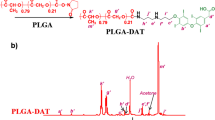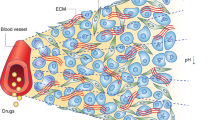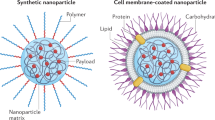Abstract
The novel compound 7(-)[4'-(2-nitroimidazol-l-yl)-butyl]-theophylline (NITP) can be used as an immunologically detectable probe for hypoxic cells. Because of the limited water solubility of NITP, it has been administered dissolved in peanut oil with 10% dimethylsulphoxide (DMSO). A new aqueous formulation has been devised, based on a 50% solution of a modified beta-cyclodextrin (Molecusol HPB), which increases the water solubility of NITP 10-fold. The pharmacokinetics of NITP in plasma and tumours have been compared following oral and intraperitoneal (i.p.) administration of the NITP in Molecusol, i.p. administration of NITP dissolved in peanut oil + 10% DMSO and injection of a near-saturated aqueous solution of the drug intravenously via the tail vein or i.p. or directly into the tumours. Binding of the marker to hypoxic cells within tumours was also measured after the different routes of administration. The Molecusol vehicle was unexpectedly toxic when administered i.p., but there was no toxicity from NITP dissolved in Molecusol when administered orally. Binding of the drug within tumours was seen for both the peanut oil + 10% DMSO and Molecusol formulations and for both oral and intraperitoneal routes. Binding of NITP within tumours has also been observed following direct injection of the drug, with minimal whole-body exposure to NITP. However, the bound metabolites of NITP within tumours were localised to the injection site, suggesting that direct injection is unlikely to be a useful method of administering bioreductive hypoxia markers. The data in this paper demonstrate that bound metabolites of the hypoxia marker NITP can be detected in tumours following oral administration of an aqueous formulation of NITP, and suggest that oral administration could be a satisfactory administration route for clinical studies with NITP.
This is a preview of subscription content, access via your institution
Access options
Subscribe to this journal
Receive 24 print issues and online access
$259.00 per year
only $10.79 per issue
Buy this article
- Purchase on Springer Link
- Instant access to full article PDF
Prices may be subject to local taxes which are calculated during checkout
Similar content being viewed by others
Author information
Authors and Affiliations
Rights and permissions
About this article
Cite this article
Hodgkiss, R., Stratford, M., Dennis, M. et al. Pharmacokinetics and binding of the bioreductive probe for hypoxia, NITP: effect of route of administration. Br J Cancer 72, 1462–1468 (1995). https://doi.org/10.1038/bjc.1995.530
Issue Date:
DOI: https://doi.org/10.1038/bjc.1995.530



